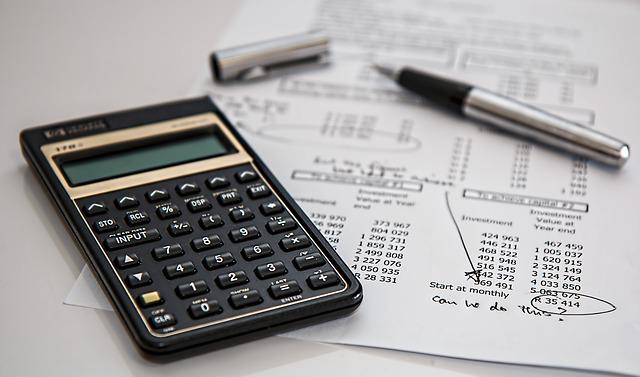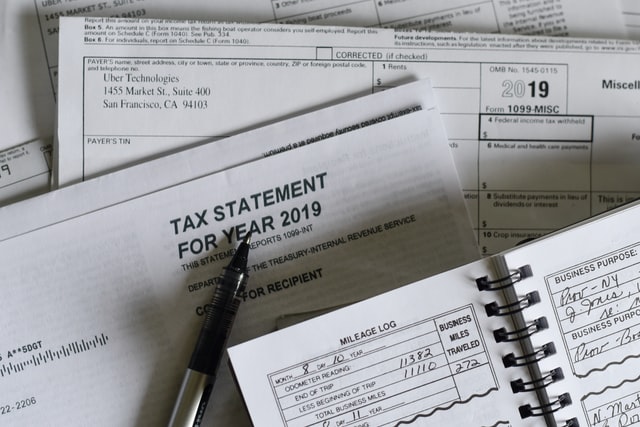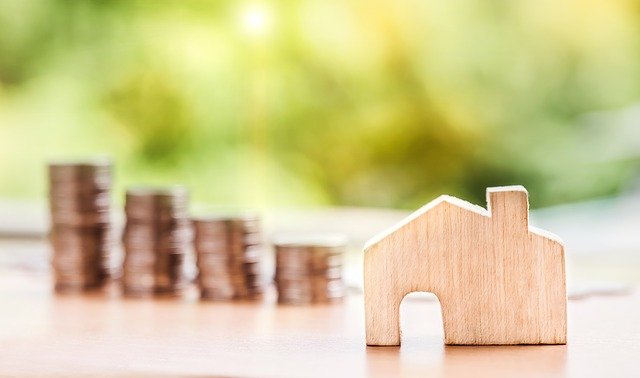GST | Flat Purchase | Rates | Before | After | Types | Affordable Housing | Input Tax Credit | Impact on Real Estate | Various Factors | Land Transactions | Developable Land | FAQs
Here is all the information you want on the Sales tax and how this will affect your finances. This article examines how the GST impacts homebuyers and real estate. We will discuss the rates for land transactions and apartments in 2022.
What is GST?
The Goods and Services Tax (GST) is a single indirect tax imposed across the board that results from the blending of significant State and Central indirect taxes. A destination-based tax known as GST is charged on the consumption of goods across the nation, thereby converting it into a single common market.
The state where the products or services are consumed, as opposed to the state in which they are produced, is where a destination tax is imposed. On the other side, an origin-based tax is set in the jurisdiction where products or services are generated (not consumed).
Check out these golden rules of accounting and details on the e-shram card.

GST on Flat purchase
Beginning in 2022, buyers of flats and apartments in ongoing development developments in India’s megacities would be charged GST. However, it should be remembered that finished projects are exempt from the GST on flat purchases. Therefore, a project is deemed finished after an appropriate body has issued a completion certificate by a proper body.
GST Rate on Flat Purchase 2021 – 2022
The 33rd GST Cabinet Meeting on February 24th proposed new GST rates that would take effect on April 1st for acquisitions of residential apartments. The following is the new GST rate that is being considered for flat purchases made in residential (real estate) transactions:
- Residential homes outside the affordable housing sector will be subject to 5% GST charges on a flat purchase, with no input tax credit (ITC).
- Without an ITC, residential properties in the class of the affordable home will be subject to a 1% GST.
The GST on a fixed purchase cost for houses still under construction is 12 percent. Reselling properties or selling finished homes are exempt from GST. Builders obtain an input tax credit for products purchased from suppliers or contractors, meant to pass on to house purchasers. The current GST rate for estate flats could alter.
Taxes before GST Implementation
A variety of state and federal taxes were imposed on buildings throughout the development of a housing project before the GST’s adoption in 2017. While these taxes raised the cost of the proposed projects for developers, builders were not eligible for a credit against the production responsibility. Real estate developers had to pay the relevant taxes before the GST went into effect:
- VAT (Value Added Tax)
- LBT Octroi Service Tax, Central Excise Entry Fee, and so forth.
The expense of these taxes was subsequently transferred to the buyer of the property. Additionally, the complexity of the multiple taxes’ rate applicability allowed developers to fudge the numbers and charge customers extra. It used to be challenging for the typical buyer to learn the rates of VAT, Federal Excise, Tax, LBT, Customs duty, and Service Tax that apply to property building.
After GST implementation
The GST was the most significant tax change to affect India since independence, which took effect on July 1, 2017. It combined various indirect taxes to give taxpayers access to a streamlined system. The tax regime’s real estate category has undergone several revisions.

Types of Central and State Taxes That GST Subsumed
(A) Centre-related taxes:
- Central Excise Duty Excise Duties (Medicinal and Toilet Preparations)
- Additional Excise Duties (Goods of Special Importance)
- Further Excise Duties (Textiles and Textile Products)
- Further Customs Duties (commonly known as CVD)
- Special Additional Duty for Customs (SAD)
- Insofar as they pertain to the delivery of goods or services, central surcharges, and fares
(B) State and local taxes
- State Value Added Tax, to start.
- Central Sales Tax
- Luxury Tax, Octroi, and Admission Tax, respectively (all forms)
- Entertainment and Amusement Tax (except when levied by the local bodies)
- taxation on advertisements Purchase Tax Taxes on lotteries, wagering, and gambling
- State fees and levies associated with the provision of goods and services
Due to the removal of trade restrictions between States, the GST has made the entire nation a single market, which would increase production and corporate efficiency. Additionally, the country would gain substantially from unified tax rates, a decrease in the cascading impact of taxes, and higher usage of input tax under GST. All significant company operations, including registration, payment of taxes, filing of returns, and so on, have been computerised.
What is Affordable Housing as Per GST?
The GST’s impact on Indian real estate may be witnessed as of the date of adoption. Since the beginning of the GST on real estate and its effects on the industry, it has been more than a year. Therefore, a GST on India’s real estate is crucial to the building industry.
Both cheap and unaffordable housing areas benefit significantly from increased GST on real estate investments. Similarly, the GST on real estate affects the entire purchase of homes, businesses, and other commercial constructions.
Under the GST, a residential dwelling or apartment with a floor area of up to 90 sq m is considered inexpensive. The home or apartment must be located in a non-metropolitan town or city. A private home or apartment in a major city must have 60 square meters of carpeting. Additionally, the price of these residential homes or apartments should reach Rs. 45 lacs in both metropolitan & non-metropolitan areas.

Affordable Housing Segment
A few criteria govern the Affordable Housing Segment of residential properties. This factor determines the GST on New Homes. The primary criteria are
- If the residential property is in a city, the total carpet area of the building must be 60 square meters or less.
- If the residential property is in a town or non-metropolitan city, the total carpet area of the building must be less than 90 square meters.
- In either case, the property’s value must be INR 45 lakhs.
What is an Input Tax Credit (ITC) under GST?
You can use the Input Tax credit Mechanism if the GST Act covers you. In other words, if you are a GST-registered producer, distributor, agent, e-commerce operator, aggregator, or any of the other individuals listed above, you are qualified to claim INPUT CREDIT for the tax that was paid on your PURCHASES.
How to submit a GST input credit claim
To obtain GST Input Credit:
- A registered dealer must issue you a payment receipt (or debit note).
- By now, you ought to have got the goods or services.
Please be aware that following receipt of the last lot or instalment, if the products are received in lots or instalments, reimbursement will be allowed against the tax invoice. Note: If the receiver has already claimed input debt based on the invoice and fails to pay the value of services or the appropriate tax within three months of the invoice’s issue, the credit will be added to his output tax due, together with interest.
- The vendor has made a cash deposit or a payment to the government for the tax imposed on your purchases by an input credit claim.
- By filing GST returns, the provider has done so.
- The invoice may be found in the recipient’s or homeowner’s GSTR-2B and was submitted by the supplier in their GSTR-1.
The most ground-breaking GST change is the need for your supplier to deposit the tax he has acquired from you before allowing input credit. As a result, it must be matched and confirmed until you receive an input credit. Therefore, every one of your suppliers needs to be GST compliant for you to be eligible to claim new attributes for purchases.
Input Tax credit on ongoing projects
For property developers who want to adopt the New GST Rates starting on April 1, 2019, the ITC transition requirements are listed below. Current construction projects that began before 01.04.2019 but weren’t finished by 31.03.2019 must transfer the ITC utilising the procedure described below.
Beginning on April 1, 2019, the ITC for the whole project was achieved using the GST Coalition ITC transition methodology for residential projects, which was utilised to fulfill the percentage of building ITC. The proportion of booked flats and the invoice balance is used to calculate ITC eligibility.
This way, the changeover will be carried out using a straightforward calculation, such as the percentage of the flat’s booking, and bills produced for booked apartments are accessible under specific precautions.
Why Does GST Have a Positive Impact on Real Estate?
- Construction at a Low Cost – The GST on the flat purchase will lower the rate of cement, steel, and other building materials, resulting in significantly lower construction costs. This will result in lower real estate prices, benefiting the middle class.
- Single Tax – A single tax base is essential in the real estate industry, according to the ITC (Integrated Taxation System). Developers and builders must pay taxes on the raw resources they buy. GST on flat purchases eliminates these problems by combining all taxes.
- Neutral Income Rate – The VAT and service tax regulations impact how the real estate business operates fiscally. With the use of a flat buy GST rate, the neutrality income rate (RNR), which is determined by main products & services taxes (SGST) and taxing agencies on items, can assist in alleviating this sort of difficulties and support the maintenance of a payment platform, i.e. (CGST).
Real Estate Registration and Stamp Duty
State government levies such as estate registration & stamp duty have remained in place since implementing GST on flat purchases. These costs differ from one state to the next and from one circle within the same state to the next. Stamp duty and registration charges will continue to apply to existing and under-construction properties across India in the GST era. In contrast, GST on a new flat purchase would only apply to sold, under-construction properties.
Impact of GST on Various Factors
GST Rates on Construction Materials
Gst On Flat Purchase is made up of two major components.
Goods \ Services
The goods purchased for construction are subject to GST, as are those purchased for construction. If the GST is 18 percent, the CGST is 9 percent, and the SGST is 9 percent. Both increase the cost to the consumer.
GST on Maintenance Charges for Housing Societies
The residents are exempt if the monthly maintenance charge paid to the Cooperative Housing societies or the Resident Welfare Association is less than INR 7,500/-. Previously, a limit of INR 5,000/- was set.
Furthermore, if your monthly maintenance exceeds a certain threshold, you may be required to pay an 18% GST on the entire amount. For example, if your monthly maintenance is INR 10,000, you must pay a GST of 18% over the whole 10,000, not just the difference between the set limit and the charged amount.
GST on Government Housing Schemes
According to the administration, the new system would only apply 1% GST to government-led significant housing developments aimed at the average person. The Jawaharlal Nehru National Urban Renewal Plan, the Indira Awas Yojana, the Pradhan Mantri Yojana, and state public housing programs are a few of these initiatives.
GST only Applies to Apartments Still Being Built; it does not apply to ready-to-move-in apartments.
It’s crucial to remember that the real estate industry is exempt from the GST. Under “work contracts,” the tax rate that applies to a real estate property is assessed. Because of this, a developer cannot impose GST on purchasing residences ready for occupancy. Instead, a property is deemed prepared to move in after delivery and reception of the occupation certificate and is no longer covered by the work contract.
In brief, selling incomplete houses that have not yet received OCs would be subject to the GST. Therefore, it’s essential to remember that service tax was levied on purchasing ready-to-move properties during the previous administration. The developer/owner will ultimately include this amount in the total cost of the property, even though he has paid GST as part of the purchase. This implies that even if ready-to-move-in properties are free of GST, the buyer still has to pay it.
GST on One-Time Maintenance Deposit Collected by Builders
The one-time upkeep deposit that property purchasers give builders is subject to the GST, according to the Gujarat court of the Agency for Advance Rulings (AAR). According to the authority, this fee is a provision of services charge and is not refundable.
On the other hand, the AAR noted that the GST would be subtracted from the maintenance payment when used for maintenance operations. Keep in mind that before residents’ welfare groups or co-operative housing societies are formed and take over care from the builder, most property developers collect a one-time upkeep deposit from house buyers.
When the RWA & CHS are established, they become entirely in charge of maintenance tasks and are free to create guidelines for determining maintenance fees. As a result, the builder will no longer be able to influence the situation.
Other Facts About GST on Home Buyers

Home buyers must pay a specific amount per square foot, which is computed depending on the size of the property. For example, buyers are charged a one-time maintenance fee, and the real money is transferred into a shared fund and utilized as and when necessary for those reasons.
However, there have been many cases when conflicts between purchasers and developers have arisen, questioning the imposition of GST on the one-time maintenance charge since there has been a fundamental lack of clarity regarding the legislation regarding the collection of this levy.
Developers frequently transfer the leftover funds into the common fund after subtracting GST at the level of 18% shortly upon collection. Following the AAR decision, developers would have to submit the complete sum without deducting any GST.
Additionally, builders were not compelled to pay service charges on such maintenance payments previous to the advent of the GST regime in 2017. Since the builder would first charge this fee, the AAR’s ruling now allows RWAs and CHSs to recover GST from society as needed. However, for prospective homeowners, it is effectively simply a payment delay.
GST on Sale of Developable Plots
While the sale of a plot is exempt from GST, this is not the case if the land parcel in question is a developable piece of property. It was widely believed that the sale of residential development property was free from the GST previous to the Gujarat Authority of Advance Rulings (AAR) decision that the sale of built plots constituted a “service” and hence taxable under the present regime. Due to a clause in the Timetable of the CGST Act, sales of land and structures are not considered to be either supply of goods or services.
GST on Stamp Duty and Registration Charges
Since the establishment of the GST regime, there have been several requests for the government to eliminate real estate stamp duty & registration costs, but no action has been taken. As a result, stamp duty & registration costs are still applied to real estate transactions in India. The registration price is either 1% of the property value or a fixed rate, while states impose stamp duty ranging from 5% to 10%.
GST on Flat Registration
When registering a property, registration costs are not subject to GST. But can we anticipate that GST would eventually take the place of registration fees and stamp duty? Experts disagree, though. In India, stamp duty on real estate transactions makes a sizable contribution to state income.
The exchequer would experience even higher losses if states gave up this money. This circumstance “leads us to assume that the prospect of the GST swallowing the two levies is nil, at least in the foreseeable future,” says Lucknow-based attorney Prabhansu Mishra.
GST on Renting and Leasing of Land
As previously stated, the GST does not cover buying land directly from a vendor without services. However, any land sold, leased, bargained for, exchanged, or rented in return for consideration should be taken into account, either for an increase in income or, in some situations, as a person’s sole income.
Because “supply encompasses all sorts of supply of products and services or both,” GST is utilized in this situation. Therefore, it is conceivable to conclude that leasing and leasing of land are taxed as a supply for GST purposes. Therefore, any lease, tenancy, or permission to occupy land is considered a provision of services under Section 2(a) of the Second Schedule of the CGST Act.
The West Bengal AAR questioned whether “a transfer of lease assets to a third party may attract GST” by the liquidator of “Leyland Apparels, a clothing factory.” According to the liquidator, such transactions are exempt from GST. Therefore, it shouldn’t be subject to GST as a result. Instead, the AAR disregarded the liquidator’s arguments and chose to abide by the Transfer Property Act’s meaning of “lease.”
Details on Lease
Instead, the AAR used the difference between a sale and a lease transaction to determine GST accrual. Currently, there are two categories of leases:
- Long-term lease: The Bombay High Court decided that the “one-time premium paid for long-term lease (30 years or more) of property” would be subject to GST at 18%.
- Short-term lease: This lease has fewer than 30 years and is subject to an 18% GST. GST exemptions for lease-related transactions – If the following criteria are satisfied, a person may be excused from paying GST:
– the leasing or renting of vacant lots without accompanying buildings.
– the leasing or renting of agricultural equipment.
– If an agreed-upon amount is paid as a long-term lease for developing plots made available by the Central or State Government, with at least a 20% ownership interest.
GST Does Not Apply to Land Transactions
The sale of land does not include the transfer of goods or services. It is likewise excluded from the GST on construction works. The GST substantially reduces 33 percent of the total contract value for taxed real estate transactions. It is because the land cost is a significant determinant of property values.
How to Calculate GST on a Flat That Is Still Being Built
Let’s say a builder offers a buyer a home that is still being built for Rs 100. The land value of Rs 33 will be subtracted from the GST on the building calculation. It leaves the GST on construction to be applied solely to the remaining Rs 77.
What is Developable Land?
This raises the issue of whether all plots can be developed. Properties that receive the necessary approvals from local authorities to carry out future growth over the land parcel are considered. To promote future development, the owner must also provide the necessary infrastructure. The piece of land qualifies as developable property if some or all of the following have been done on it:
- plot enlargement
- grade the ground
- erecting a fence road construction
- Overhead tank building
- pipeline construction for water
- installation of underground sewage lines
- installing a water collection system
- building sewage treatment facilities
- establishing manicured gardens
- the setting up of a drainage system
Rate of GST on Developable Land
Buyers will pay 18 percent GST if they purchase developable lands. However, before the implementation of the GST system, only direct taxes, such as stamp duty & registration fees, were paid in connection with the sale of real estate.
FAQs
Is GST levied on the sale of land?
Land sale is not subject to GST by Schedule 3 of the CGST Act of 2017. It is neither a supply nor a provision of services.
What is the GST value of Supply?
The value of supply under GST is the price that the seller charges. Also, the buyer for the sale of goods or services. Because land is an immovable property, there is no GST on its sale.
Is GST applicable on property purchases in 2022?
GST is charged for acquiring homes that are still being built, including bungalows, apartments, and flats. If plots can be expanded in the future, GST will be imposed. GST is due if you purchase a flat or apartment in a project still under development in 2022.
Is GST applicable on property purchases in 2022?
GST is charged for acquiring homes that are still being built, including bungalows, apartments, and flats. If plots can be expanded in the future, GST will be imposed. GST is due if you purchase a flat or apartment in a project still under development in 2022.
What are the three kinds of GST?
There are three different types of GST in India. Integrated Goods and Services Tax (IGST), State Goods and Services Tax (SGST), and Central Goods and Services Tax (CGST) (IGST).
